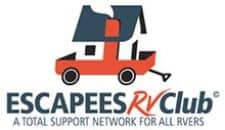As a digital nomad, having access to wifi on the go is pretty much essential. No matter what type of remote work you do – writing, editing, virtual assisting, coding, day-trading, etc. – you’re definitely going to need wifi access at some point.
As a blogger / virtual assistant / digital nomad, I know I do! And I need it A LOT. Especially when it comes to communicating with clients and meeting those strict deadlines.
Whether you’re backpacking, hostel-hopping, hiking the Blue Ridge Mountains, or exploring the Florida Keys in your van … wifi is just a necessity sometimes. Besides work, you might need wifi for mapping, researching your next amazing destination, or if you’re anything like me, YouTubing how to change a flat tire …
The good news is that in most parts of the world, there are plenty of ways to access wifi. In most cases, you’ll find that you’re closer to your next wifi source than you think! There are toooons of cheap, and even FREE, options for wifi out there. And all you have to do to be able to take advantage of this free wifi is know where to go and who to ask.
So, lets go over everything you need to know about finding free wifi on the road!
WHERE CAN YOU FIND (TRULY) FREE WIFI?
You can find free wifi almost anywhere! Some common places to find free wifi are:
- Your cell phone
- Public libraries
- Airports
- Bus/train stations
- Large shopping centers (ex. malls, outdoor outlets)
- Coffee shops
- Fast food restaurants
- Hostels & hotels
- Retail stores
Get wifi right from your phone
So, you’ve got a big deadline coming up and you need to find some wifi quick. What do you do?
First, check your phone plan! Many phone companies offer phone plans that include mobile wifi hotspots and USB tethering. And the best part is: Most of the time, this service is already included in your phone plan.
Just keep in mind that mobile hotspots use a good amount of data. So, if you’re on a phone plan that restricts your data usage, you may want to look for a different option.
This is a great choice for someone with an unlimited data plan. HOWEVER, some unlimited data plans don’t extend to hotspot usage! Several AT&T plans, for instance, restrict mobile data usage to 10GB per month through the hotspot feature.
To see if your phone has a mobile hotspot:
- Open your phone and click on settings. There, you should see a tab called Personal Hotspot.
- Click this tab and turn your Personal Hotspot to ON. This creates a Local Area Network (LAN) right from your phone!
- Now, you should be able to connect your laptop or tablet to your mobile hotspot via Bluetooth or LAN.
Alternatively, you can connect to your phone’s cellular internet using USB tethering, which is very similar to a mobile hotspot, but requires a USB cord and can only be used for one device at a time.
If you can’t find the ‘Personal Hotspot’ tab on your phone, odds are you probably don’t have this feature. If you’d like to add this feature to your phone plan, just reach out to your cellular provider and ask for this upgrade.
Phone companies that offer personal hotspot capabilities include:
- U.S Cellular
- Verizon
- T-Mobile
- AT&T
- Sprint
- Google Fi
- Visible
- Mint Mobile
Stop by a public library

No matter what country, city, provenance, or town you’re in, there will most likely be a public library nearby. Public libraries are great sources of high-speed wifi, not to mention they usually have computers for public use and provide a nice, quiet, and calm area to get some work done!
Plus, the cherry on top is that most public libraries can be found right in the heart of the city or town which gives you an awesome excuse to explore the downtown area and meet some locals!
However, many libraries will restrict your session duration to 45 minutes to 2 hours. You’ll also probably require a passcode for a particular time slot, which you can request from the front desk.
High traffic travel hubs = FREE wifi

At airports, bus/train stations, and large shopping centers, you will always find free and easy to access wifi. These places are super convenient sources of wifi for travelers because you will probably find yourself at at least one of these major travel hubs at some point during your travels!
Because these places are known to have high foot-traffic, these places usually have very large, open networks with very strong wifi connections. And what I mean by ‘open’ is that these types of networks are usually NOT protected by a password. WHOOP WHOOP!
Sip some coffee & soak up some wifi
In addition to the above travel hubs, many coffee shops and restaurants have free wifi. Most credit card machines require wifi to perform any credit or debit transaction so…a little tip to keep in mind is that if a business has a credit card machine, they have wifi.
Unlike airports and bus/train stations, coffee shops and restaurants usually have a password for their wifi because it’s for customers only. But, don’t let that hold you back! If you’re in serious need of wifi, just purchase a water, coffee, or small snack, and then feel free to soak up alllll the wifi you need!
At coffee shops and restaurants with free wifi, you’ll usually see a ‘free wifi’ sign on the door or the wall and you’ll have to figure out the password once you get inside. You will most likely find the password on the wall, the door, or the menu (be sure to check the back!). And if you can’t find it, don’t be afraid to ask an employee! I have found that almost 99% of the time, employees are happy to share the password!
Coffee shops that always offer free wifi:
- Dunkin Donuts
- Starbucks
- Port City Java
- Joe and The Juice
- Tim Hortons
- Peet’s Coffee
Restaurants that always offer free wifi:
- McDonald’s
- Taco Bell
- KFC
- Panera Bread
- Wendy’s
- Subway
- Burger King
- Quiznos
- IHOP
Work right where you stay
Unless you are staying somewhere reeeeally remote, your hotel or hostel will almost certainly have wifi. If you already know that you will require wifi for long periods of time, it’s best to plan ahead and book an accommodation that provides wifi.
On most booking sites like Airbnb, Hostelworld, and VRBO, each listing specifies if they have wifi or not…which is super helpful when choosing where to stay.
Most of the time, you will need a password to access your hotel or hostels wifi network. The hotel or hostel will either have the wifi password hanging on the wall or a door, or they will give it to you upon check in. Either way, these networks are usually strong, secure, and stable.
P.S – hotels and hostels almost always set their wifi passwords as the name of the establishment. Just as an example, the Marriott Hotel wifi password might be something really simple like Marriott123. So, if you’re nearby a hostel or hotel that you’re not staying at, you may be able to connect to their wifi just by guessing the password….this trick has worked for me on so many occasions.
Drop by your closest retail chain
Retail chains all across the United States, Canada, and other more fully developed countries oftentimes offer free wifi to the public. And the best part about these large retail chains is that you can usually access their public network right from the parking lot – no need to even go inside! Plus, because these stores are usually very large with high-foot traffic, retail chain wifi networks are very strong and require no password!
Retail chains with free wifi access include:
- Apple Stores
- Target
- Barnes and Noble
- Best Buy
- Lowes
- Target
- Whole Foods
- Office Depot
- Staples
- Jiffy Lube
RESTRICTIONS AND CHALLENGES OF FREE WIFI

As with anything else in life, you may hit some snags here and there. And, unfortunately, this even applies to locating wifi. So, let’s talk about some restrictions you might run into along the way.
Finding a secure server
Joining free and unsecured wifi networks across the country can put your personal and financial information at risk to hackers and scammers. This is especially true in large cities. To protect yourself, I recommend utilizing a VPN service when connecting to any free or public wifi. You can find a variety of easy-to-download options for VPN services online and most services offer at least a 1-month free trial!
Highly-rated VPN services include:
- PureVPN
- NordVPN
- ExpressVPN
- Surfshark
Differing wifi speeds
Wifi speed depends on soooo many factors…what country you’re in, what region of that country you’re in, the establishment, the time of day, and so on. In most cases, any old wifi connection should be all you need. But, some remote work requires a very strong connection that might be harder to find.
In the United States and Canada, the average wifi speed at major airports is around 80 Mbps, making it the safest and most reliable option for wifi access. Starbucks is a close second, with the average wifi at each location clocking in around 51 Mbps.
Wifi range
Every wifi router has a range of coverage. Some are larger and some are smaller. You can connect to some wifi networks from a whole block away and some may require that you actually enter the building. So, depending on your work needs, you may want to plan ahead and choose the location that best suits your work-environment needs.
Best time of day to use wifi
So, this isn’t really a restriction…rather, something to think about. If you need a stronger connection to wifi, you may be able to achieve this by using the wifi network during the least busiest times of the day. Less people connected to the wifi = faster and better wifi for you!
The best times of day to use a crowded wifi network are:
- Very early in the morning (4:00am-7:00am)
- In the middle of the day when other wifi users are out (11:00am-3:00pm)
- Late at night (11:00pm-4:00am)
WHERE CAN YOU FIND ALMOST-FREE WIFI?
Purchase a foreign phone plan
In many countries, you can purchase SIM cards with mobile hotspot capabilities. In fact, many people purchase SIM cards upon arrival in different countries to avoid paying those ridiculously expensive international phone rates. Plus, in addition to wifi capabilities, they also give you access to data, calls, texting, and all your normal apps! Just remember to store your original SIM card somewhere safe!
Locate a dedicated workspace
As digital nomading and working remotely has become more and more popular, I’ve started seeing more dedicated workspaces in hotels and hostels. Of course, these workspaces are for guests…but sometimes these workspaces are open to the public as well.
These workspaces usually have public computers and are always well-lit, quiet, and free for guests. Plus, the wifi is usually extremely good because these spaces are designed for digital work.
You can find one of these dedicated workspaces in almost every one of the Selina Hostels – which are located alllll over the world! At the Selina Hostels, these dedicated workspaces are free to guests and open to the public for $10/day.
Bring your portable wifi device
A portable wifi device is an excellent choice for someone that’s always on the go! Basically, you purchase a portable wifi device like the SkyRoam Mobile Hotspot and pay for wifi on a monthly basis. And BAM! You have wifi everywhere you go! And with portable wifi devices like this, you pay only for the wifi you’ve used – there is no standard rate/month.
Don’t be afraid to ask around!

Individual businesses or business owners might allow you to use their wifi for free or for a small fee. This isn’t super common, but when you’re in a pinch, it never hurts to ask!
ACCESSORIES & BACKUPS FOR DIGITAL NOMADS
Backup battery
When you’re working on the road, you absolutely have to be able to keep all your electronics charged. This goes for your phone, your laptop, your tablet, and your portable wifi device. This is why it’s a great idea to have a backup battery source!
The best option for travelers is a USB battery bank WITH power outlets for your laptop cord. This type of battery backup system will allow you to charge your laptop, phone, tablet, and more on the go or during a power outage. Two good choices for a USB battery backup are the APC UPS Battery Backup and Surge Protector and the Omni 20+ 20000mah Laptop Power Bank.
Noise-canceling headphones
If you have trouble focusing on work when other people are around, then noise-canceling headphones are A MUST! A good pair of noise-canceling headphones can greatly reduce distractions, improve your productivity, and help you focus soooo much better.
Depending on your preference, there are tons of different noise-canceling headphones out there. If you like a sleeker-looking headphone with Bluetooth capabilities, I suggest Anker Soundcore headphones.
Mini USB fan
Ok – this one might seem silly but stay with me here. For Christmas one year, my mom bought me a little USB fan that plugs right into my computer. At first, I thought “No way, I’m never using this”. But, once I tried it, I literally couldn’t live without it.
As digital nomads, our offices are always changing. Some days it might be your hostel and others it might be a local coffee shop. Either way, you can’t always control the temperature so it’s soooo nice to have a little personal fan. I like to work outside as much as humanly possible, so I use my fan alot.
These little fans are tiny, easy to pack and store, quiet, and put off the nicest little breeze. Plus, they are a great way to cool your laptop down as it gets hotter with use. In fact, the cooling fan inside my laptop rarely turns on if I’ve got my USB fan nearby.
ALWAYS HAVE A BACKUP PLAN!!
Okay guys, that’s pretty much everything you need to know about finding wifi on-the-go! Free wifi is becoming easier and easier to access which makes remote work a breeze to complete from anywhere in the world. The most important thing to remember is that shit happens and sometimes you have to get creative to solve the problem!
In most cases, you’ll find wifi in no time and be able to complete your work with zero issues! But, just in case of emergency, it’s always a good idea to plan ahead and do your research. Always remember to plan work according to your travel schedule and research sources of wifi before traveling anywhere.
And lastly, always have a backup plan! Save a backup to the cloud, not just your hard drive! Always have a plan in place to make up the work later if all else fails and never be scared to reach out to your boss or clients and let them know you’ve encountered a sticky wifi situation. I’ve found that most clients are super reasonable when it comes to issues like this…
So, to wrap this all up, I wish you guys the best of luck with alllll your remote work and travels…may your wifi connections always be strong, close-by, and easy to access!
Samantha is a college student, turned van-lifer, turned full-time digital nomad! She spent most of 2020 exploring the East Coast in her 1988 Volkwagon Weekender before taking off to explore Latin America. Her work includes everything from virtual assisting to blog writing & she enjoys hostel hopping, meeting new people, and diving head first into different cultures. Samantha has lots of experiences to share about what it’s like to be a young, female, digital nomad in the world today!
-
Samantha Longhttps://changingears.com/author/samantha-long/
-
Samantha Longhttps://changingears.com/author/samantha-long/
-
Samantha Longhttps://changingears.com/author/samantha-long/










